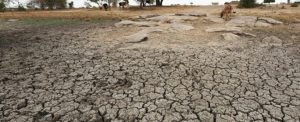Air Quality And Health In Cities:

A report was released titled Air Quality and Health in Cities, which analysed pollution and global health effects for more than 7,000 cities around the world between 2010 and 2019.
- The study ranked cities on the basis of two major air pollutants found — fine Particulate Matter (PM2.5) and Nitrogen Dioxide (NO2).
Findings:
PM 2.5 Levels:
- Delhi and Kolkata are ranked first and second in the list of top 10 most polluted cities when PM 2.5 levels were compared.
- PM 2.5 is an atmospheric particulate matter of diameter of fewer than 2.5 micrometres, which is around 3% the diameter of a human hair.
- It causes respiratory problems and reduces visibility.
- While exposures to PM 2.5 pollution tend to be higher in cities located in low- and middle-income countries, exposure to NO2 is high across cities in high-income as well as low- and middle-income countries.
NO2 Levels:
- No Indian city appeared in the list of top 10 or even top 20 polluted cities when NO2 levels were compared.
- Average NO2 levels for Delhi, Kolkata and Mumbai, according to the report, ranged from 20-30 µg/m3.
- This list saw Shanghai at the top with an average annual exposure of 41 µg/m3.
- NO2 comes mainly from the burning of fuels in older vehicles, power plants, industrial facilities and residential cooking and heating.
- As city residents tend to live closer to busy roads with dense traffic, they are often exposed to higher NO2 pollution than residents of rural areas.
- Other cities with high NO2 population levels included Moscow, Beijing, Paris, Istanbul and Seoul.
Death Burden:
- Beijing had the largest disease burden associated with a PM 2.5-related illness, with 124 attributable fatalities per 100,000 persons.
- Five Chinese cities were in the top 20.
- Delhi came in 6th, with 106 deaths per 100,000 and Kolkata at 8th with 99 deaths.
Causes:
- Only 117 nations currently have ground-level monitoring systems to track PM 2.5, and only 74 nations are monitoring NO2 levels.
- In 2019, exposure to pollutants in 86% of the more than 7,000 cities exceeded WHO’s standard, therefore, impacting around 2.6 billion people.




